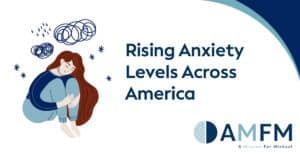Thousands of patients each year rush to the emergency room thinking they’re having a heart attack, only to learn that their heart is perfectly fine. Rather, the symptoms they’re experiencing–chest pain, shortness of breath, sweating , and shaking–are all due to a panic attack.
Many people are surprised that something that springs from mental disorder can have such powerful and physical manifestations. However, it’s important to recognize that even though the distress is technically “all in your head,” panic attacks are severe problems that greatly impact an individual’s ability to cope on a daily basis.
What are panic attacks?
Panic attacks are very sudden occurrences wherein the body’s sympathetic nervous system kicks into high gear, sometimes known as the “fight or flight” response, that’s triggered in potentially life-threatening situations. Although panic attacks are exaggerated responses that many be triggered by something not necessarily life-threatening (or even by nothing at all) that doesn’t mean that the body’s reaction is any less real, or that the situation is any less scary. Panic attacks can last 10 minutes or more, but they’re usually over within 25 minutes.
Panic attacks are usually a symptom of an anxiety disorder, or extreme periods of stress. It’s important to recognize that feelings of anxiety are different from a panic attack. Although anxiety may cause something similar–inability to catch your breath, sweating, and tremors–anxiety usually comes on gradually and in direct response to certain thought patterns or stimuli.
Panic attacks and the cycle of anxiety
What can make panic attacks especially distressing is that although they’re initially caused by some kind of anxiety, eventually, the anxiety can become rooted in the fear of a panic attack itself. Because they can seem so randomly provoked, many people who have experienced panic attacks in the past might feel afraid to ever venture outside of their comfort zone for fear of bringing on another panic attack at a disastrous moment.
Treating anxiety and panic attacks
Fortunately, panic attacks and the anxiety disorders that go with them are highly treatable. Talk therapy, medications, and behavioral changes like exercising can all help to mitigate anxiety and make anxiety disorders more manageable, and panic attacks less likely. It’s also important to understand other co-occurring disorders that could contribute to and exacerbate anxiety disorders, such as depression, PTSD, addiction, or schizophrenia. Feel free to contact us if you have any questions.








